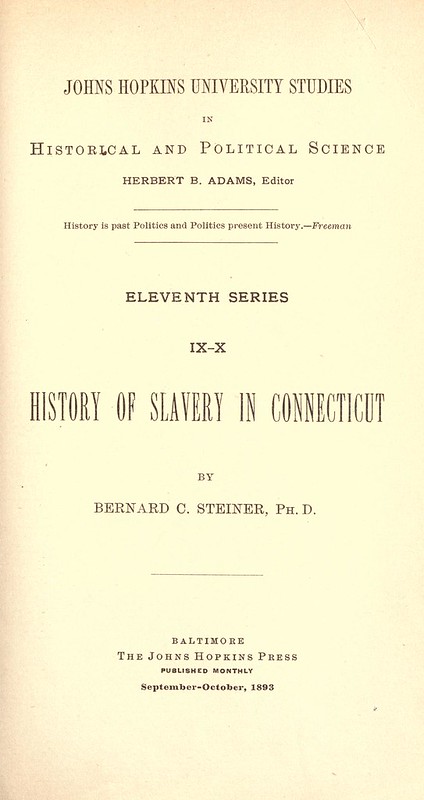 The practice of slavery in the colonial period in Connecticut began with indigenous persons captured as the result of armed conflict with the European settlers. The male members of local native tribes were often shipped to the West Indies to work as plantation slaves while the tribal women and children were enslaved locally.
The practice of slavery in the colonial period in Connecticut began with indigenous persons captured as the result of armed conflict with the European settlers. The male members of local native tribes were often shipped to the West Indies to work as plantation slaves while the tribal women and children were enslaved locally.
The advent of the the African slave trade brought the first black slaves to Connecticut around 1680. In 1690, Connecticut established the “black code” stating that “any Negro, mulatto or Indian” without a written pass from his owner would be considered a fugitive slave and subject to immediate seizure. Subsequent decades brought a significant increase in the importation of African slaves to Connecticut with official records showing a total of 6,562 black slaves within the state by 1774. That same year Connecticut colony instituted an official act prohibiting the further importation of black or mulatto slaves into the state.
The official act banning further importation of slaves came against the backdrop of the colonies ongoing disputes with the English crown. The irony of seeking liberty from England while maintaining the institution of slavery was not lost on many residents of the colony. The Sons of Liberty wrote a letter published in the Norwich Packet on July 7, 1774 stating “How vain and hypocritical our pretenses! Can we expect to be free, so long as we are determined to enslave?”
The Connecticut General Assembly in 1777 passed an act allowing slaves to enlist in the Continental Army to bolster the recruitment of soldiers during the Revolutionary War in exchange for emancipation. In some cases slaves were drafted as substitutes for their owner as a way of fulfilling his obligation for military service.
The Connecticut legislature took a further step on the path of emancipation in 1784 by enacting a measure stating that no black or mulatto person born after March 1, 1784 should be held as a slave after reaching the age of twenty-five. In 1790 the Connecticut Anti-Slavery Society was formed with President Ezra Stiles of Yale College as president of the organization. Despite these developments the route to complete elimination of slavery in Connecticut was gradual. It was not until 1848 that the state legislature passed the law abolishing slavery.
To learn more about Connecticut’s history concerning slavery visit the Otis Library’s Flickr page with the album History of Slavery in Connecticut containing the 1893 Johns Hopkins Press monograph by Bernard C. Steiner.
